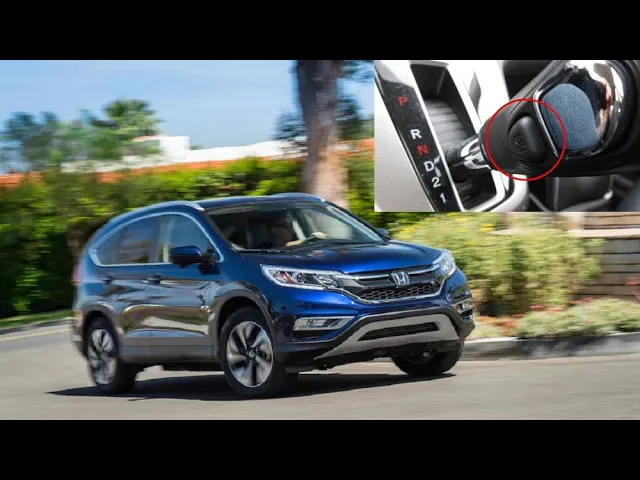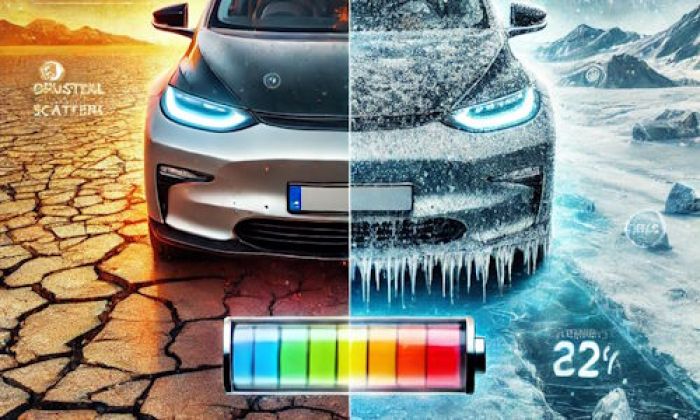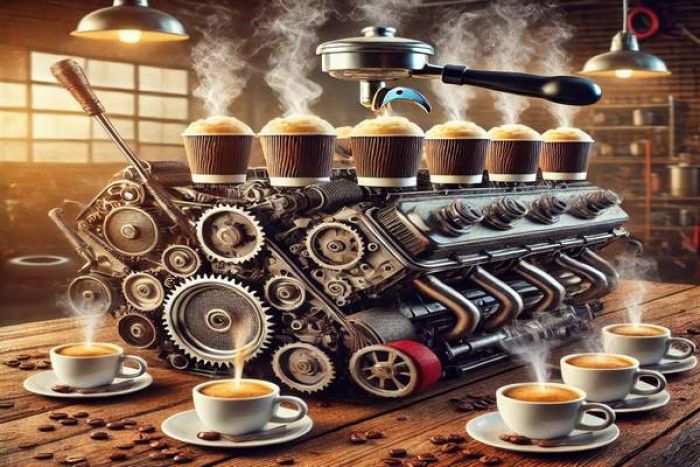Motorcycles are not just transport options. These two-wheeled vehicles are made for fun riding, for getting the pleasure of every ride. We know that the owners of motorcycles will prefer using their bikes to driving their cars. And this is true nearly for all people who have bikes. But sometimes we buy motorcycles without thinking much about their longevity.
Unfortunately, we tend to think with the categories that are true for passenger cars. For example, when you buy a motorcycle, you are likely to look at its mileage. And when you see, let's say, 70 000 miles, you will think that it's quite good. But is it actually good? Today, we are going to tell you some important things about the longevity of motorcycle engines.

Here are some important outlines:
- How long can an average motorcycle engine last?
- What can kill your bike engine faster?
- How can you prolong the life of your engine?
- The most popular problems you may get with a motorcycle engine.
Let's get started!
The average mileage of a motorcycle engine
You could see the "expert" comments on the internet saying that any motorcycle engine with modern technologies can last very long - something like 200 to 300 thousand miles. Unfortunately, those comments have nothing to do with reality. Motorcycles can't live that long, usually.
Yes, there are some big bike engines that can actually survive much more than average. We know some guys who used their Evolution Harley Davidson engines for more than 200 000 miles. Some other motorcycle engines can also survive until they reach 200-250 thousand miles. But these are exceptions, not the rules.
Here's what you need to know about the average longevity of motorcycle engines:
- the average mileage of an engine in your motorcycle will be somewhere near 100 000 miles;
- some sports bikes will show worse results - 30 000 to 50 000 miles will be a lot for a crotch rocket engine;
- the longevity depends much on some factors like regular maintenance and also your habits on the road;
- the type and manufacturer of your engine will also change the longevity of the motorcycle;
- even if the engine can survive up to 250 or 300 thousand miles, the whole construction of the motorcycle will need expensive repairs.
Driving a motorcycle that has already achieved 300 000 miles on the clock, is not a very good idea. This transport will constantly need some investments. The repair of some motorcycle engines and transmissions can be extremely expensive.
Again, if you have a highly reliable bike, and if you maintain it as the manufacturer says, chances are that you will ride the motorcycle for a long time. But stop believing the fairy tales about "300 000 miles without major repairs". It's virtually impossible for ANY motorcycle in the world.
How do you kill your motorcycle engine?
The main problem of sports bikes or so-called crotch rockets is that the engines are revving up all the time to extremely high RPM. These engines are powerful, but they are small and their displacement is not big enough to withstand all the loads you want them to withstand. So if you want to drive at the top of the motorcycle's abilities, you should choose a Bugatti crotch rocket or something like that.
But riding habits are not the only thing that affects the bikes. Here are some other factors you should consider:
- Maintenance. A regular oil change is not the only thing you should do. Also, choose the special type of oil designed for your type of motorcycle engine. Control the coolant if you have a liquid-cooled engine.
- Watch out if you see black smoke from the tailpipe. The black smoke is the burning oil. You should check the engine and find out whether it takes oil because of the piston rings or any other parts that started malfunctioning.
- Fuel quality. A lot of bikes are designed to burn premium gasoline only. If you decide to save up some money at a gas station, you will be disappointed with the engine's longevity.
- Overheating. This problem comes from revving up. A lot of motorcycle owners like hearing that noise when their bike is revving up. But that noise comes with a higher temperature of the engine. It's a big problem for all air-cooled units. And for some liquid-cooled ones, too.
- Inadequate cold start. When you start your motorcycle engine in the morning, especially in winter, you should let it idle for a minute or two before you start moving. Otherwise, the engine will experience extensive wear.
Before you start riding your bike, you should learn how to do it. Sometimes just simple mistakes will steal a lot of miles from your engine. As a result, somewhere near 50 000 miles the engine will start breaking and showing numerous problems. Of course, it depends on the initial engine quality and longevity. But in most cases, the engines will drop just because the motorcycle owner makes a lot of mistakes in using his or her bike.
What can you do to drive your motorcycle longer?
We've outlined some of the most important problems that can kill your bike rather sooner than later. Looking at these points, we can tell you about some procedures and precautions that may save your motorcycle engine from any problems and prolong its life. It's not hard to follow these tips. And you should know that they can save you thousands of dollars in the future.
Here are some of the most important tips:
- Always change the oil sooner than it should be changed. Be careful with choosing the type of oil, only the recommended type is OK for your motorcycle engine.
- Be careful with revving up the engine, especially if it's still cold. Try to warm up the engine at least 1 minute before you start moving.
- Buy optimal fuel that is recommended by the manufacturer. Never try to save up some money reducing the fuel costs. Your bike will not be glad, otherwise.
- Be careful with any mechanical damages and overheating. If you suspect that overheating took place, go to a service station and let them check your engine.
- Never rev up the engine for a long time. Revving up is possible for sports motorcycles, but it shouldn't be extremely high RPM.
- Pay attention to the maximum payload. Some motorcycles are made for one person only. Never overload your transport to keep it running.
- Keep an eye on any problems. If your motorcycle starts malfunctioning, just let it be inspected at a service station.
If your bike needs repair, you shouldn't wait until you are in a good mood to speak to a service station worker. The immediate repair will usually be cheaper and more advantageous for you in a long run. Also, you may avoid bad consequences if you repair the bike once it shows the problems. If you keep on riding with a problem, you may destroy the engine or some other important parts of your motorcycle.
Also, keep an eye on engine mounting. If the mounting is broken, the engine will not work at its optimal capabilities. It will shake and destroy the block and the pistons.
Some of the popular problems with motorcycle engines
In most cases, you will start getting problems at 100 000 miles in Harley Davidson-like motorcycles, and at 40 000 miles at crotch rocket-like bikes. The first problems are usually mild for your budget, but they give you a hint that you should think about thorough repair or even about changing your bike (buying a new one).
Here are some problems you may experience:
- Oil consumption because of piston rings problems. The piston rings may lose their shape and let the oil come to combustion chambers.
- Valve seals problems. Valve seals also deteriorate over time and let the oil come into combustion chambers.
- Block cracks. Some motorcycles are known to have this problem. The block can crack because of overheating.
- Head deformation. If the bike engine overheats, the head can lose its shape. This will bring bad troubles with the gasket and leaking fluids.
- Fuel injection problems. These are the cheapest problems you can get, no need to repair the engine itself.
Final words
As you see, motorcycle engines are not as long-lasting as car engines, for example. They are usually smaller in displacement and in power, they are revved up like hell and experience different loads. We still know that some bikers ride their motorcycles for a long time. They boast their mileage - 250 000, 300 000 miles, and even more. So it's possible to drive a motorcycle for pretty many miles.
But for this, you will need to maintain your motorcycle engine and watch for all possible problems. Once you see any trouble, just visit a service station and let them inspect your bike. This will help you maintain the motorcycle in optimal condition.
About the authors
The CarAraC research team is composed of seasoned auto mechanics and automotive industry professionals, including individuals with advanced degrees and certifications in their field. Our team members boast prestigious credentials, reflecting their extensive knowledge and skills. These qualifications include: IMI: Institute of the Motor Industry, ASE-Certified Master Automobile Technicians; Coventry University, Graduate of MA in Automotive Journalism; Politecnico di Torino, Italy, MS Automotive Engineering; Ss. Cyril and Methodius University in Skopje, Mechanical University in Skopje; TOC Automotive College; DHA Suffa University, Department of Mechanical Engineering






Add comment